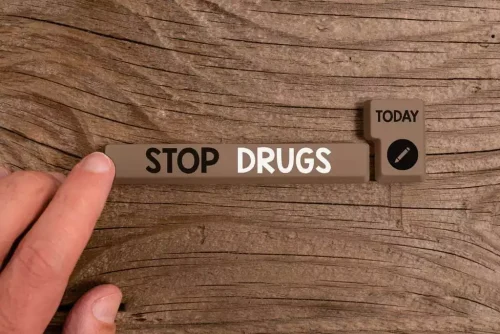
Studies show that CRAFT interventions have a success rate ranging from 64% to 74% when it comes to getting a loved one with a substance use disorder into treatment. Wait Am I an Alcoholic until your loved one is sober and relatively emotionally stable. Make sure you are also feeling calm, as it is important that your loved one doesn’t feel attacked.
Problem Drinking vs. Alcoholism
For example, you may blame an ‘unfair boss’ for trouble at work or a ‘nagging wife’ for your marital issues, rather than think about how your drinking is contributing to the problem. While work, relationship, and financial stresses happen to everyone, an overall pattern of deterioration and blaming others may be a sign of trouble. You’re spending less time on activities https://ecosoberhouse.com/ that used to be important to you (hanging out with family and friends, going to the gym, pursuing your hobbies) because of your alcohol use. Repeatedly neglecting your responsibilities at home, work, or school because of your drinking. For example, performing poorly at work, flunking classes, neglecting your kids, or skipping out on commitments because you’re hung over.

CHECK YOUR DRINKING: An interactive self-test
Some say that if you have to ask whether or not you have a drinking problem, chances are that you probably do. And if others in your life have told you that you have a problem, you probably do. If you have continued to drink in spite of negative consequences, that could be an indication of a serious problem.
Effects of alcoholism and alcohol abuse
Preparing and anticipating questions will help you make the most of your appointment time. Not all alcohol abusers become full-blown alcoholics, but it is a big risk factor. Sometimes alcoholism develops suddenly in response to a stressful change, such as a breakup, retirement, or another loss. Other times, it gradually creeps up on you as your tolerance to alcohol increases. If you’re a binge drinker or you drink every day, the risks of developing alcoholism are greater.
- The early warning signs of an alcohol problem can be hard to recognize because some symptoms can overlap with what are considered normal teen behaviors.
- Keep track of all your activities in a daily diary or schedule planner for a few weeks, and take an honest look at how it adds up.
- It will not guarantee that you may be diagnosed with alcohol use disorder.
- Can you think of more than a few times when you came to work with a hangover, missed deadlines, or got behind on schoolwork because of your drinking?

Alcohol dependence refers to being unable to stop drinking without experiencing symptoms of withdrawal. People often continue drinking to alleviate these unpleasant symptoms. This change was made to challenge the idea that abuse was a mild and early phase of the illness and dependence was a more severe manifestation. Alcoholism is a type of drinking problem that involves physical and psychological dependence on alcohol.
What Is Considered a “Safe” Level of Drinking?
Continuing to drink even though your alcohol use is causing problems in your relationships. Getting drunk with your buddies, for example, even though you know your wife will be very upset, or fighting with your family because they dislike how you act when you drink. Using alcohol in situations where it’s physically dangerous, such as drinking and driving, operating machinery while intoxicated, or mixing alcohol with prescription medication against doctor’s orders. If your drinking is causing problems in your life, then you have a drinking problem. Even if your loved one does enter treatment and recovery, there will likely be many bumps along the way. Without alcohol as a coping mechanism, deeper issues tend to rise to the surface and must be dealt with.
National Institute on Alcohol Abuse and Alcoholism (NIAAA)

This is sometimes called the “5+/4+ rule” (5-plus/4-plus rule) of binge drinking. This is the amount of alcohol in your system to be considered legally impaired. For most adults, that equates to five drinks for men or four drinks for women within a two-hour period. Doctors diagnose alcohol use disorder (AUD) when a person has two or more of the symptoms listed below.

- Pemberton recommends undergoing the four-question CAGE assessment, a screening tool that may identify a substance abuse problem.
- Health care providers diagnose AUD when a person has two or more of the symptoms listed below.
- Explore a variety of health care news & stories by visiting the Health Lab home page for more articles.
- Alcohol addiction causes changes in the body and brain, and long-term alcohol abuse can have devastating effects on your health, your career, and your relationships.
- Not all alcohol abusers become full-blown alcoholics, but it is a big risk factor.
Your drinking has led to trouble with your family or friends, or made problems worse, yet you continue to drink. This doesn’t make you a bad person, but it does make it more urgent that you look for help to change your habits and get your relationships back on track. This guide is written for individuals—and their family and friends—who are looking for options to address alcohol problems. It is intended as a resource to understand what treatment choices are available and what to consider when selecting among them.
- The COVID-19 pandemic has lingered on longer than anticipated, and throughout this time people have faced various hardships.
- This helps you understand your loved one’s behavior, and it helps you stop blaming them.
- Binge drinking is excessive alcohol consumption on one occasion.
- ” then you might want to know the difference between a drinking problem and alcoholism, also known as alcohol addiction or alcohol use disorder (AUD).
- Alcohol can damage your liver, heart, brain, pancreas, and immune system.
- Some people are surprised to learn that there are medications on the market approved to treat AUD.
- It is intended as a resource to understand what treatment choices are available and what to consider when selecting among them.
- In fact, there are many treatment options available thanks to significant advances in medical and behavioral research over the past decades.
- Research has shown that the terminology used does, in fact, influence how people with a substance use disorder view themselves as well as how others view them.
- Likewise, those affected by another person’s alcohol use disorder might seek individual or family counseling, Fernandez says.
- Here’s another reason to try “Sober October” — a UK psychiatrist is warning about a “middle-aged drinking epidemic” that can raise the risk of cancer and even early death.
- Binge drinking can have many of the same long-term effects on your health, relationships, and finances as other types of problem drinking.
Genetic, psychological, social and environmental factors can impact how drinking alcohol affects your body and behavior. Theories suggest that for certain people drinking has a different and stronger impact that can lead to alcohol use disorder. If your pattern of drinking results in repeated significant distress and problems functioning in your daily life, you likely have alcohol use disorder. However, even a mild disorder can escalate and lead to serious problems, so early treatment is important. Those problems could include depression, an inability to manage stress, an unresolved trauma from your childhood, or any number of mental health issues.
Lifestyle and home remedies
Substance abuse experts make a distinction between alcohol abuse and alcoholism (also called alcohol dependence). Unlike alcoholics, alcohol abusers have some ability to set limits on their drinking. However, their alcohol use is still self-destructive and dangerous to themselves or others. Despite the potentially lethal damage that heavy drinking inflicts on the body—including cancer, heart problems, and liver disease—the social consequences can be just as devastating.
